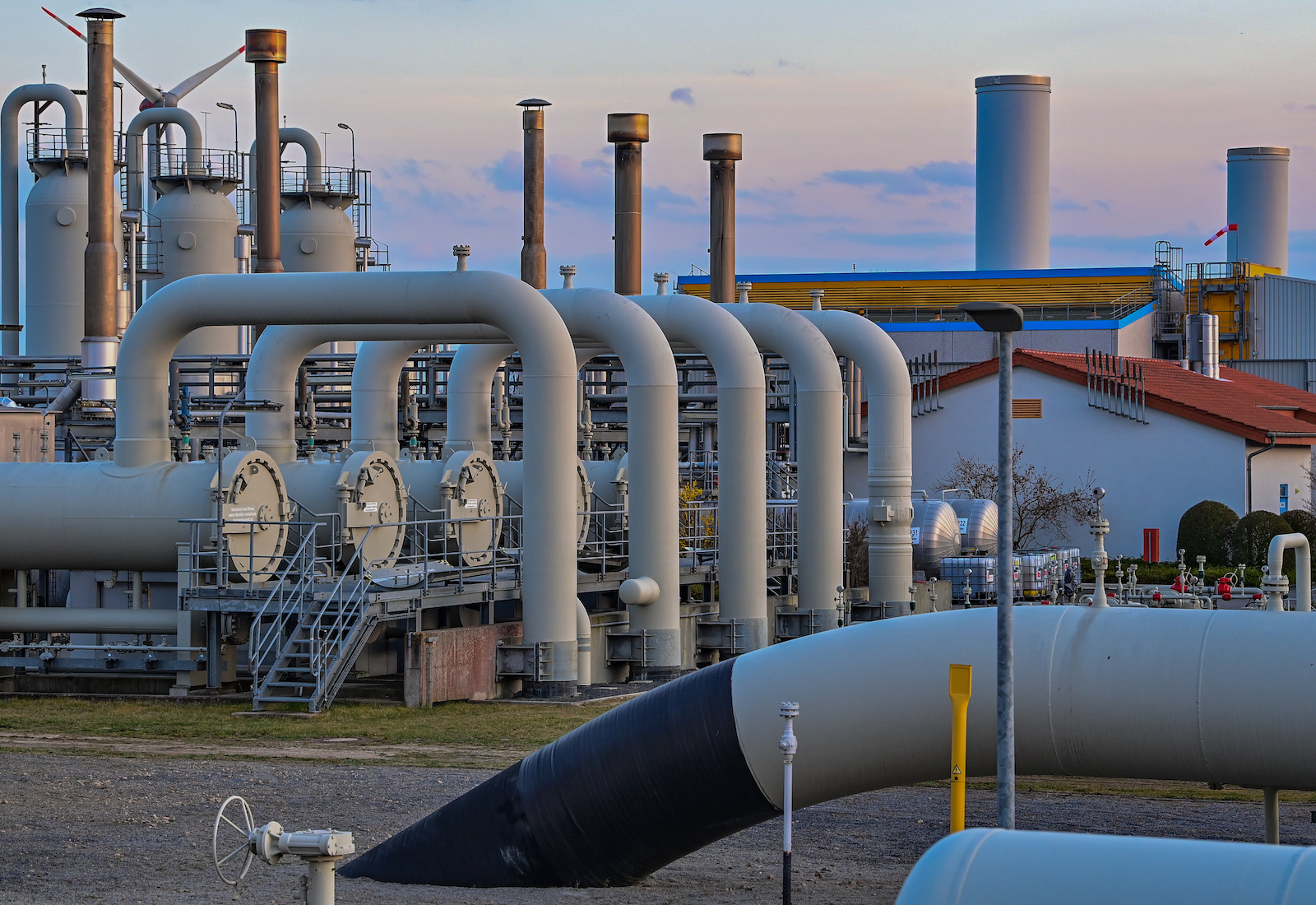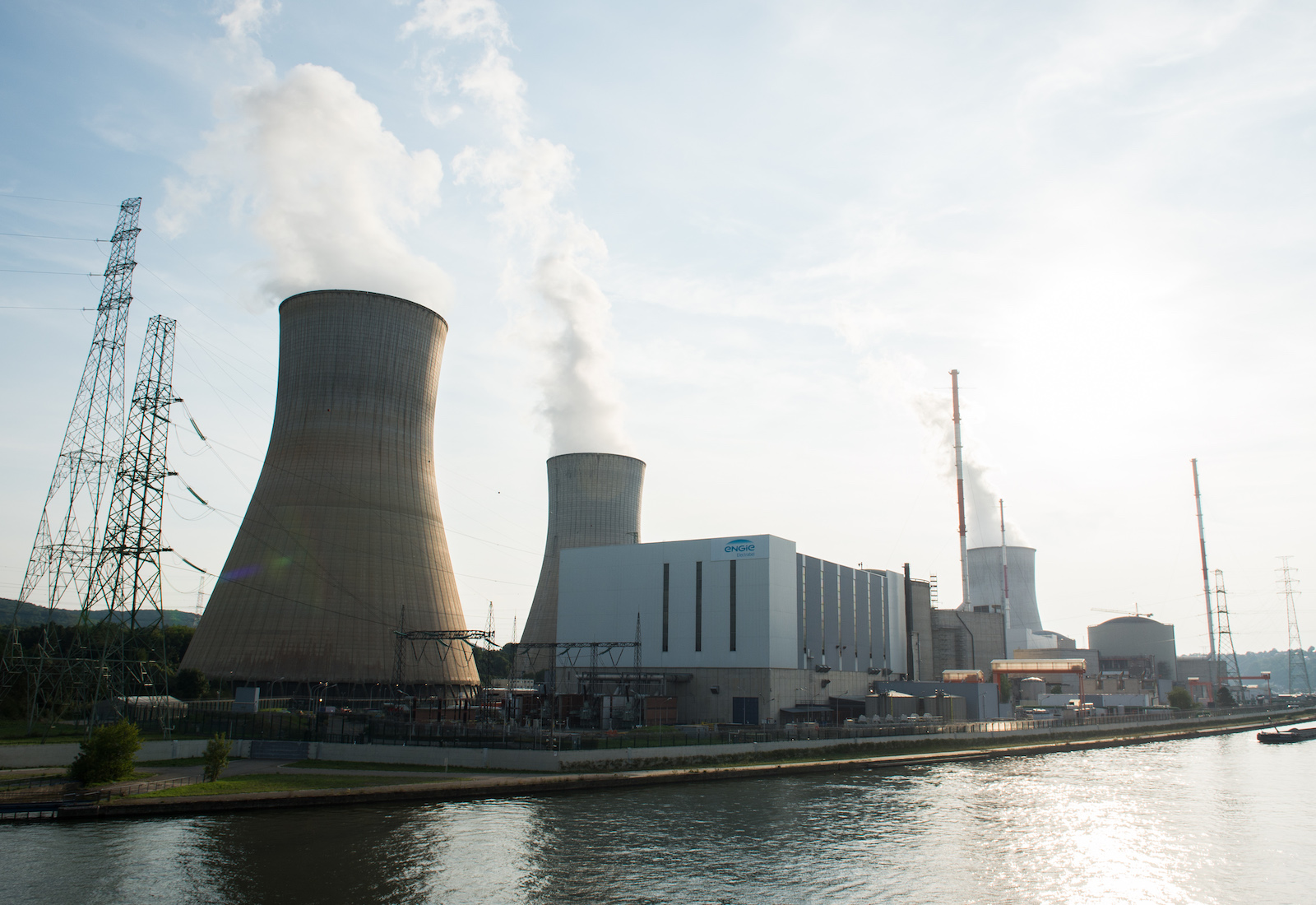As European leaders condemn Russia’s unprovoked invasion of Ukraine and unspeakable violence against civilians, many have found themselves in an awkward situation: They need Russian gas to heat buildings and generate electricity. Roughly one-fourth of Europe’s energy comes from natural gas, and as much as 40 percent of it flows from Russia.
To help wean Europe off Russian gas as soon as possible, some experts are now calling for a boost in nuclear power generation. Although nuclear power plants already represent an important energy source for the continent, at least 30 facilities have either recently been decommissioned or are slated to close in the next few years. Keeping them running could provide a reliable and low-emissions alternative to fossil fuels. The idea is controversial — especially because of fears of a meltdown — but advocates have argued that, in the face of a crisis, existing reactors should be kept online and those scheduled for retirement should be allowed to keep producing energy.
“Nuclear provides a lot of energy and it does so without impacting the environment by producing greenhouse gases,” said Adam Stein, director of nuclear energy innovation at the Breakthrough Institute. “Keeping those plants on the grid allows them to offset potential imports of fossil fuels.”
Indeed, this was the argument made last month by the International Energy Agency — an intergovernmental body that analyses the world’s oil supply — in a 10-point plan for European Union leaders. To cut reliance on Russian natural gas this year, the agency said, countries should “maximize generation from existing dispatchable low-emissions sources” — including by completing a reactor that’s being built in Finland and by resuming operations of facilities that were taken offline last year for maintenance and safety checks.
According to the IEA, these two actions alone could quickly add 20 terawatt-hours of power generation to the European grid in 2022 — about as much energy as five Hoover Dams would produce in a year. Additionally, delaying the closure of five nuclear reactors slated for retirement later this year and in 2023 could reduce the European Union’s gas demand by nearly 1 billion cubic meters per month — slightly more than one-third of Spain’s natural gas consumption in 2020.
Part of the reason the idea has gained attention is because of the daunting prospect of scaling up alternative solutions, both fossil and renewable. Shipments of liquefied natural gas are constrained by global supply and a lack of import and export terminals. And at the current pace of wind power installation — about 14 gigawatts per year — it could take decades to build the 370 gigawatts that experts say is needed to supplant the energy provided by Russian gas.
Leaders in at least one country have been convinced by this logic. In mid-March, Belgium announced it would keep its seven nuclear reactors online for another decade, despite previous plans to retire them by 2025. The U.K. has also toyed with the idea of keeping one of its nuclear power plants online past its planned retirement date, but has yet to make a final decision.

Stein, with the Breakthrough Institute, thinks that more countries should adopt this approach to foster a “nuclear renaissance” — not only keeping existing reactors in operation but bringing back those that have recently been retired. Germany, for example — which has pledged to end all nuclear power generation by the end of this year — lost about 4 gigawatts of nuclear power capacity between 2020 and 2021 as it switched off three of its last six power plants. For context, this is roughly enough energy to power 3 million homes. But the plants are still there and could, in theory, be turned back on. Any obstacles to doing so, such as procuring a workforce or quickly lining up uranium orders — which are typically placed years in advance — are largely “overcomable,” Stein said, and regulators could streamline the process by loosening recertification requirements for facilities that have only recently shut down.
“We know that the operating characteristics of these plants are safe,” he said, and called for “cutting the red tape, as it were, to meet emergency needs.”
The German government, however, didn’t find the nuclear argument quite as compelling. Germany ruled out a nuclear revival earlier this month on the grounds that it would “not help” alleviate the country’s energy crunch. An assessment by the German economy and environment ministries concluded that bringing back nuclear power generation would not begin to offset fossil fuel demand until fall 2023 and would pose legal and safety risks.
Public polling suggests that much of the German public would agree with this decision. In a series of Europe-wide surveys conducted last year by the pollster YouGov, nearly 60 percent of German respondents said the country should not produce nuclear energy or that it should only play only a “small role” in the country’s energy mix. The poll showed similar skepticism in countries with longstanding stances against nuclear power, such as Denmark and Italy. Respondents from countries that are more dependent on nuclear power — particularly France and Sweden — expressed greater support, with up to 45 percent saying nuclear should play a “major role” in their countries’ energy mix, on par with solar and wind.
European opposition to nuclear power is informed by high-profile disasters in decades past, including the 2011 meltdown at Japan’s Fukushima Daiichi facility. These fears were heightened in early March, when Ukraine’s Zaporizhzhia power plant was attacked by Russian forces. Many feared an unintended radiation leak or the weaponization of the facility’s atomic resources.
“This sort of thing could happen anywhere at any time,” said Linda Pentz Gunter, director of media and development for the nonprofit Beyond Nuclear. Even short of a deliberate attack on nuclear facilities, she added, a natural disaster or even a prolonged power outage could lead to a potential catastrophe — especially for reactors that are decades old and are nearing the end of their scheduled lifetimes. “The potential for a high amount of radioactivity, for where it could blow, is really frightening.” This view is contested by those who point out that nuclear power plants are associated with far fewer deaths per year than other energy sources such as natural gas and even wind power.

Kai Vetter, a nuclear engineering professor at the University of California, Berkeley, pointed out that there are downsides to any power source. Natural gas fuels war, creates air pollution, and contributes to climate change; nuclear power carries some risk of a meltdown; and the expansion of renewables requires destructive mining for rare earth metals.
Given the current context, however, Vetter says the risks from nuclear are small compared with the danger Ukrainians are facing every day. “You can compare a gamma ray from a nuclear reactor with a bullet flying from a gun,” he said. “One will kill you and the other will not kill you. One has to keep that perspective.”
However, there is further controversy over the economics of nuclear power. The cost of renewable energy has fallen dramatically over the past few years, and some experts say that it would be faster and cheaper to offset Russian gas demand by building new solar and wind and making efficiency improvements to help buildings use less energy. According to Amory Lovins, an adjunct professor of civil and environmental engineering at Stanford University, unsubsidized efficiency upgrades or renewables can compete with existing nuclear reactors’ operating costs. A yearly benchmarking study from the asset manager Lazard estimated that generating nuclear energy from existing facilities costs between $24 and $33 per megawatt-hour, whereas the levelized cost of unsubsidized energy from solar and wind — which includes the money it takes to build solar panels and wind turbines in the first place — can be as low as $26 per megawatt-hour. Plus, Lovins argues that there is an opportunity cost to keeping nuclear reactors online: More money going into nuclear operations equals less money available for renewables, which most countries agree they need more of.
“Nuclear restart or extension in Europe is a distraction,” Lovins said. “It’s more about politics than a realistic strategy.” Because of significant regulatory hurdles and safety concerns, he also disagreed with the assertion that retired nuclear reactors could be easily brought back online.
Instead, Lovins and others support an alternative plan to cut Russian gas dependence that was put forward by the European Commission in early March. Dubbed REPowerEU, this proposal does not include nuclear power, but instead calls for diversified gas supplies, expedited permitting for renewables, and support for other fuel sources such as hydrogen and biomethane. Behavioral change is also an underappreciated way to slash Russian gas dependency, Lovins argued, and he suggested that if Europeans who use gas for heating turn down their thermostats by 1 or 2 degrees Celsius, they could make a big impact on overall demand.
It’s not yet clear whether the crisis in Ukraine will spur a significant change in European nuclear power. Countries that have long opposed nuclear continue to do so, while those that are heavily reliant on it have no plans to change course. It may take a policy change at the E.U. to turn the tide one way or the other. Against the backdrop of the war in Ukraine, the bloc is in the midst of a fierce debate over whether to define nuclear as a “green” source of energy. A final taxonomy is set to inform climate-conscious investors as they decide which new energy projects to fund.
Meanwhile, Vetter stressed that conditions in Ukraine are forcing hard decisions that are unlikely to please everyone. Between needing to keep energy supplies stable, supporting Ukraine, and getting off fossil fuels, every option comes with its tradeoffs. While he vocally supports keeping nuclear reactors online, he expressed hope that the situation will catalyze a more balanced discussion of the continent’s energy future. “It’s really sad what’s happening in Ukraine,” he said, but “even the more idealistic politicians are saying we need more pragmatic solutions.”




